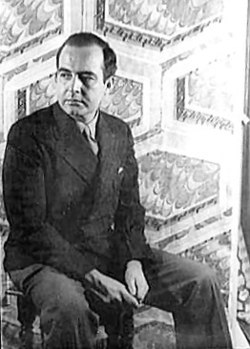Adagio for Strings

Adagio for Strings is a work by Samuel Barber. It is his most well known work. It was made for string orchestra from the second movement of his String Quartet, Op. 11. Barber finished the Adagio for Strings in 1936. It was the same year that he wrote the quartet. It was conducted by Leonard Bernstein.
It was performed for the first time in 1938, in a radio broadcast from a New York City studio. It was attended by an invited audience, conducted by Arturo Toscanini. Toscanini also took the piece on tour to Europe and South America.
Its reviews was generally positive, with Alexander J. Morin writing that Adagio for Strings is "full of pathos and cathartic passion" and that it "rarely leaves a dry eye."[1] The music is the setting for Barber's 1967 choral arrangement of Agnus Dei. Adagio for Strings can be heard in many TV shows and movies.
In 2004, listeners of the BBC's Today programme voted Adagio for Strings the “saddest classical” work ever.[2]
References
- ↑ Morin, Alexander (2001). Classical Music: Third Ear: The Essential Listening Companion. Backbeat Books. p. 74. ISBN 0-87930-638-6.
- ↑ "John Harle and FCO Movie Classics 22 Oct 2011". Festival Chamber Orchestra. Retrieved 2013-12-05.
Other websites
- Sample from the BBC
- NPR 100: Barber's Adagio
- The Impact Of Barber's Adagio by All Things Considered
- Special on the selection of the 1938 broadcast debut of Adagio for Strings to the 2005 National Recording Registry